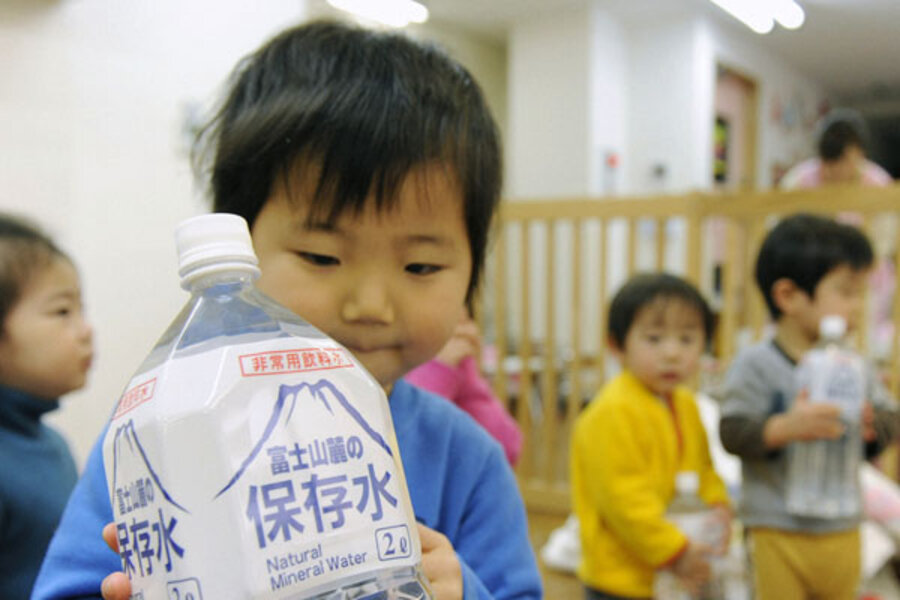Japan nuclear update: No need to worry about Tokyo tap water, officials say
Loading...
The radioactivity of Tokyo tap water came within acceptable drinking limits for infants on Thursday, prompting Japanese officials to drop restrictions that had been raised a day earlier. But that positive news came as officials also announced that more three workers at the stricken Fukushima nuclear power plant were injured.
Tests on Thursday at the Kanamichi Water Purification Plant, which provides water to Tokyo, showed 79 becquerels of radioactive iodine per kilogram of water – bringing it under the 100 becquerels per liter limit for infants. The acceptable limit for adults it is 300. Yesterday officials measured it at 210.
Yet even at that above-normal level, scientists said there was no need for alarm. Otsura Niwa, a Kyoto University professor emeritus of radiation biology, told the Mainichi Daily News that "Japan's standards are too strict in the first place. Even if babies are given tap water, their parents don't have to worry too much about it."
Three Fukushima workers injured
More than 24,000 people are thought to be dead or missing since the 9.0-magnitude earthquake and triggered a massive tsunami that struck northeast Japan on March 11. Five workers have died at Fukushima – from explosion or operational accidents – and some two dozen more have been injured for various reasons, according to plant owner Tokyo Electric Power Company (TEPCO).
Three additional workers from the "Fukushima 50" were injured Thursday after being exposed to some 170 millisieverts of radiation while laying cable for electricity to a building at unit No. 3. Two of them were hospitalized.
While electricity has not yet been fully restored to the plant, all six nuclear reactor units have been connected to a power line. At least one water pump is working and is expected to help reverse the overheating at the Fukushima reactors and spent fuel ponds that triggered the worst nuclear crisis in the past quarter century.
Nuclear reactors under control
White smoke was also seen rising Thursday from the No. 1 reactor, but Chief Cabinet Secretary Yukio Edano said this was not a cause for alarm, since cooling water is now in that unit's nuclear spent fuel pool. He added that the temperature at the No. 1 reactor, which began rising early Thursday, "right now is going down."
Officials described unit No. 2 as quite stable, although the reactor's core as well its containment vessels are also thought to be damaged. Sea water is being pumped in to cool it.
The dark smoke previously seen coming from reactor No. 3 seemed to have stopped Thursday. Unit No. 3's core reactor is damaged and its fuel rods are either partly or fully exposed. Unit 3 is of particular interest because it is the only unit believed to house plutonium as well as uranium.
Efforts also continued Thursday to pour water on the spent fuel pool at the No. 4 reactor. Officials estimated that this would wrap up Friday. The No. 4 nuclear spent fuel pool has been cause for concern because, unlike units 5 and 6, it is believed to be rather full and "possibly damaged." Units 5 and 6 are believed to be stable.
The US Food and Drug Administration has not banned the import of Japanese seafood, which accounts for about 2 percent of Americans' seafood consumption, reports the Wall Street Journal.





